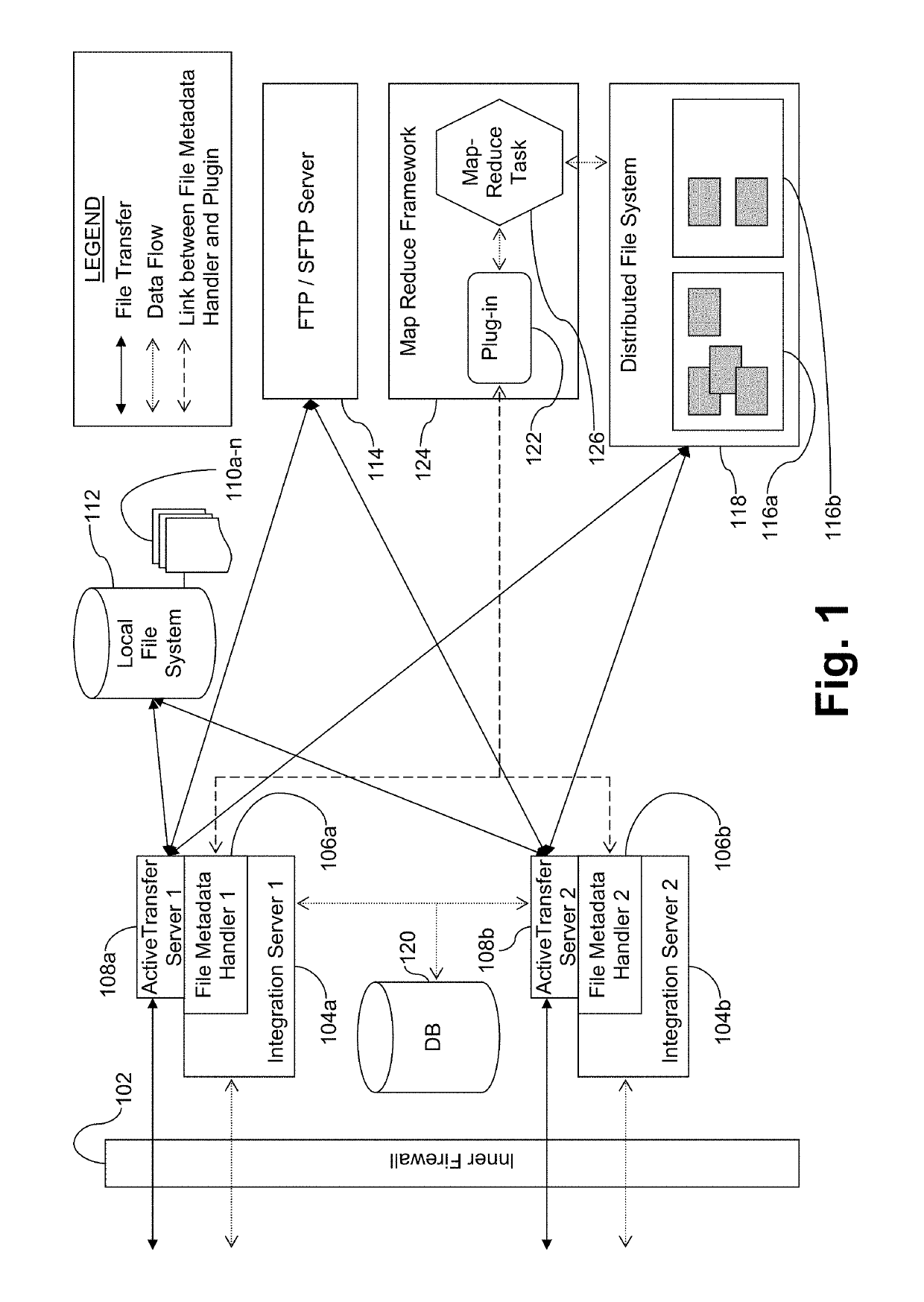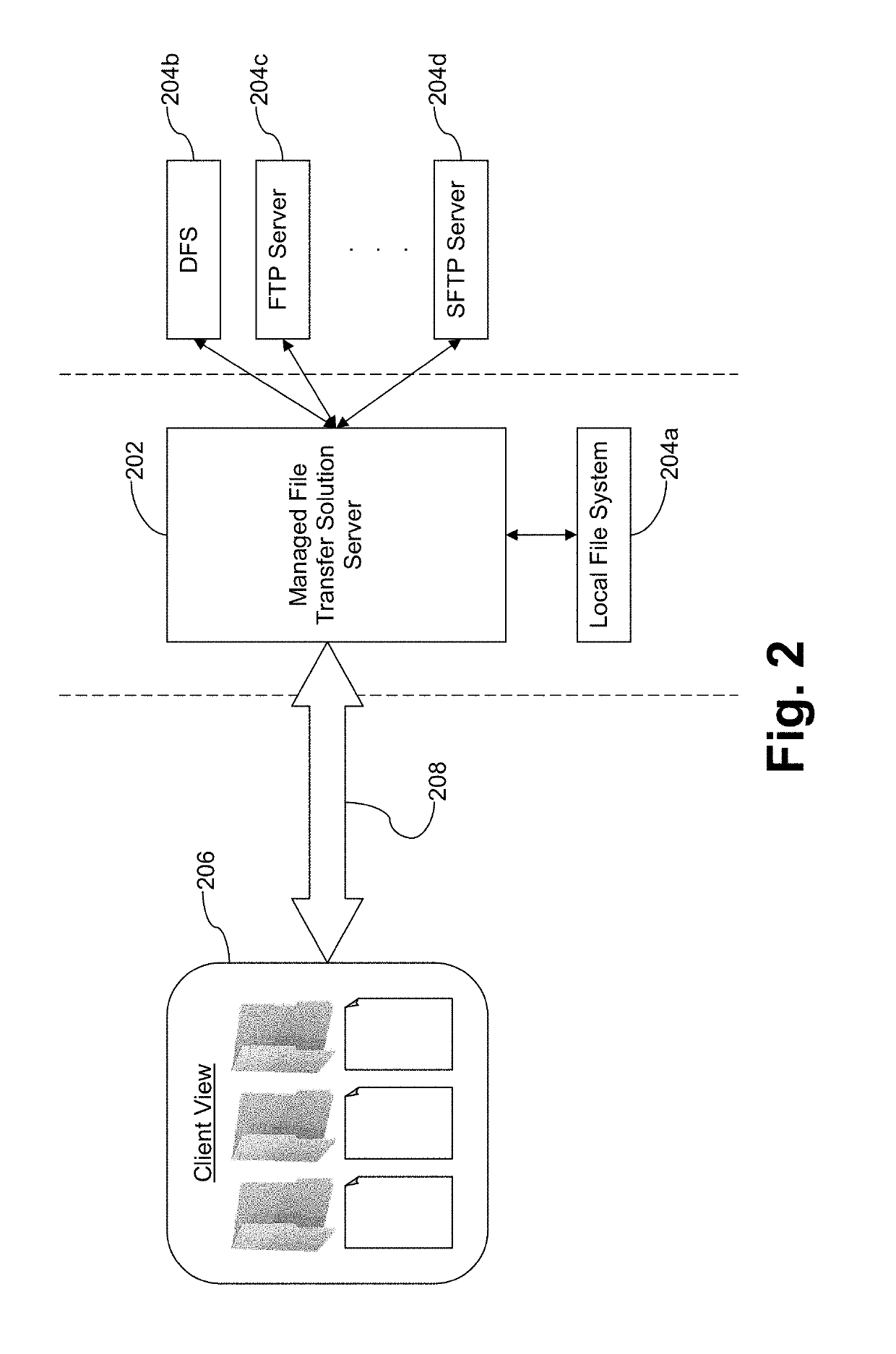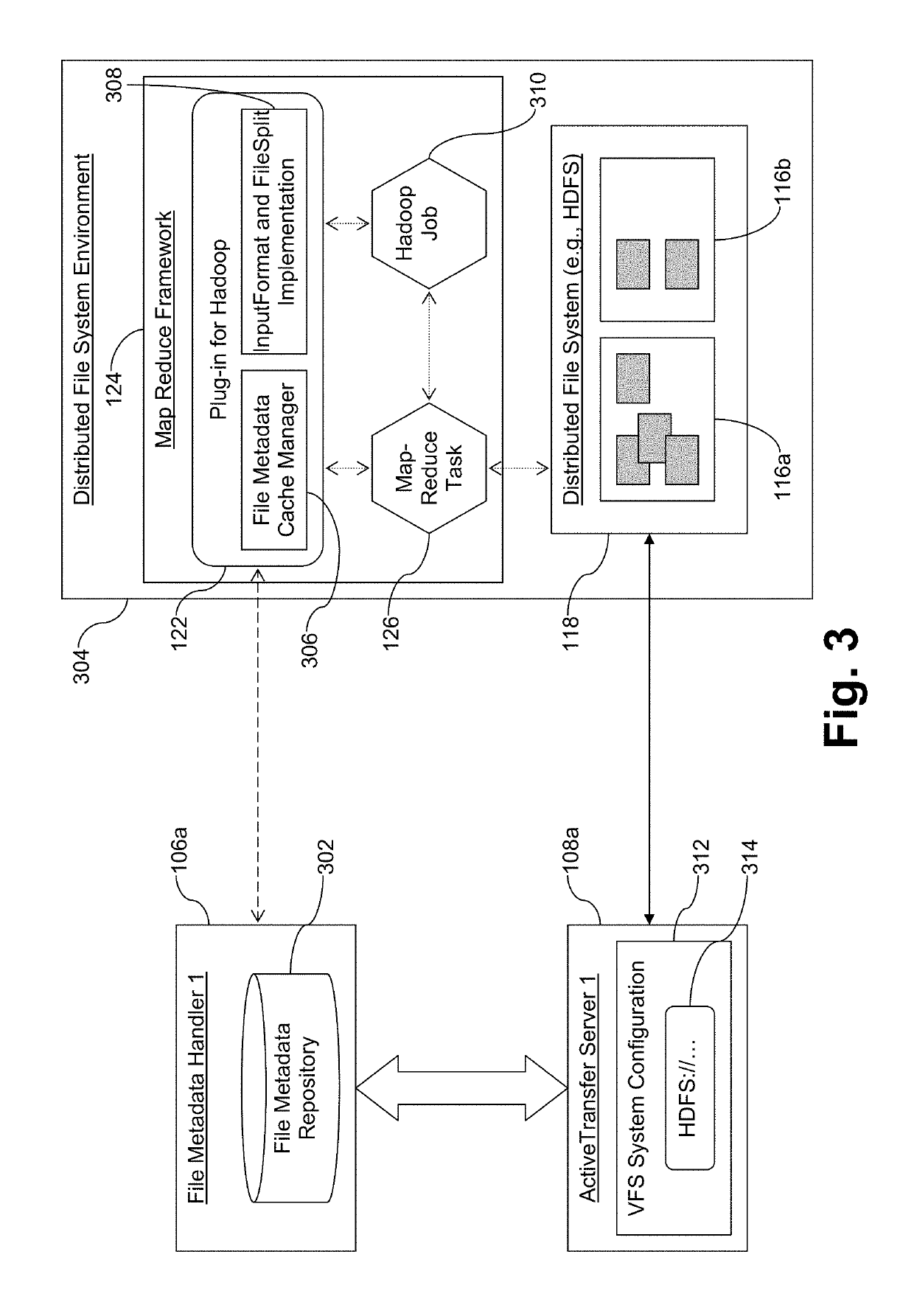File metadata handler for storage and parallel processing of files in a distributed file system, and associated systems and methods
a file metadata and file technology, applied in the field of file metadata handlers, can solve the problems of requiring a high degree of skill, time and in-depth knowledge about files, creating network bottlenecks, and not being able to adapt a particular api at execution time, and achieve the effect of high data bandwidth and scalability
- Summary
- Abstract
- Description
- Claims
- Application Information
AI Technical Summary
Benefits of technology
Problems solved by technology
Method used
Image
Examples
example implementation
[0054]An example implementation will now be provided. The example uses ActiveTransfer Server as the managed file transfer solution, and Hadoop as the DFS framework. It also assumes the presence of a map reduce framework, e.g., for facilitating distributed processing, etc. However, it will be appreciated that the techniques set forth herein may be used with any suitable combination or sub-combination of one or more managed file transfer solutions, DFSs, etc., with or without associated map reduce frameworks.
example file metadata
Handler
[0055]FIG. 4 is a flowchart showing a process that may be followed by a File Metadata Handler according to certain example embodiments. In step 401, an end-user will select an extension library. The File Metadata Handler will have built-in support for many formats. However, the plugging-in of an extension library may be provided for those formats for which support is not already available. In step 403, the user will select a unique name for the file metadata definition. In step 405, the user will link the file metadata definition with a filename pattern, an extension in the filename, or some other identifier. For example, the filename extension could be .xml, .csv, .EDI, etc., which would indicate corresponding type of XML files, comma-separated value files, EDI files, etc. As another example, the pattern in the filename could be a suffix and / or prefix in the filename that uniquely defines the structure of the file. This second option may be helpful when, for instance, it is ...
PUM
 Login to View More
Login to View More Abstract
Description
Claims
Application Information
 Login to View More
Login to View More - R&D
- Intellectual Property
- Life Sciences
- Materials
- Tech Scout
- Unparalleled Data Quality
- Higher Quality Content
- 60% Fewer Hallucinations
Browse by: Latest US Patents, China's latest patents, Technical Efficacy Thesaurus, Application Domain, Technology Topic, Popular Technical Reports.
© 2025 PatSnap. All rights reserved.Legal|Privacy policy|Modern Slavery Act Transparency Statement|Sitemap|About US| Contact US: help@patsnap.com



